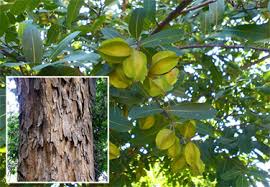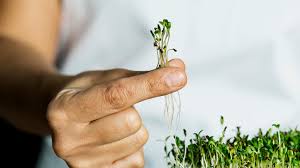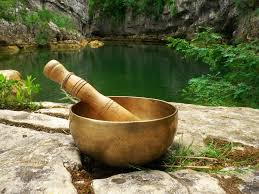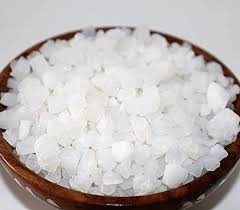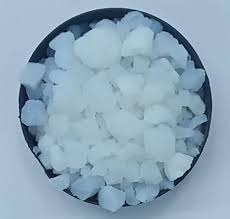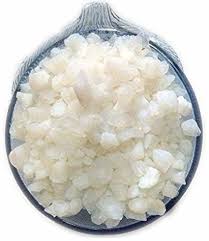
Importance of Banslochan in South Indian Healing Practices
Banslochan, a rare and precious silica-rich secretion found inside female bamboo culms, holds a deep-rooted place in Indian traditional medicine. While its benefits are acknowledged across various regions of India, its relevance in South Indian healing practices is especially noteworthy. Known for their rich Siddha and Ayurvedic traditions, South Indian healing systems integrate Banslochan as a cooling agent, a mental pacifier, and a potent herbal remedy. This article explores the profound significance of Banslochan in South Indian therapies, rituals, and wellness routines, offering historical context and practical applications.
Long Description
- Understanding Banslochan: An Ancient Natural Extract
Banslochan, also referred to as Tabasheer or Bamboo Silica, is derived from Bambusa arundinacea. In Ayurveda, it is classified as a Rasayana, meaning a rejuvenator. In South India, especially in Tamil Nadu, Kerala, Andhra Pradesh, and Karnataka, traditional healers have utilized this translucent, stone-like substance to promote inner balance, soothe inflammation, and calm emotional disturbances. - Regional Context: South Indian Medical Systems
South Indian healing is deeply influenced by both Ayurveda and Siddha medicine. While Ayurveda focuses on balancing the three doshas—Vata, Pitta, and Kapha—Siddha medicine deals with harmonizing the elemental forces (earth, water, fire, air, and ether). In both systems, Banslochan is considered a sattvic (pure and calming) substance, highly beneficial for maintaining equilibrium between body and mind.
Siddha Medicine’s View of Banslochan
In Siddha texts, Banslochan is classified under Thathu (minerals) and is said to strengthen the bones, enhance reproductive health, and support the nervous system. Its cooling and adaptogenic qualities make it a preferred remedy for heat-related ailments and stress-induced disorders, common in the tropical climate of South India.
- Historical Use in South Indian Healing
Banslochan has been historically used in:
Postpartum care: Mixed with herbs like Aswagandha and Shatavari to strengthen new mothers.
Fever and dehydration: Incorporated into traditional drinks and decoctions to reduce high fever and internal heat.
Child immunity tonics: Blended with honey or ghee and administered to children to improve immunity and vitality.
Joint and muscle pain: Used in external applications or oils for anti-inflammatory relief.
Digestive disorders: Combined with triphala and ginger for improving gut function and eliminating toxins.
- Banslochan in Folk Medicine and Home Remedies
In many South Indian households, especially in rural areas, Banslochan is used in home remedies:
Cooling Elixirs (Panakam): During summer months, it is added to jaggery-based drinks to prevent sunstroke.
Herbal hair oils: For strengthening hair and preventing premature graying.
Lepas and pastes: Applied on forehead or temples to relieve tension headaches or migraines.
These household uses are a testament to the deep trust communities place in this natural substance.
- Importance in Ritual Healing and Spiritual Traditions
In the spiritual traditions of South India, health is not just physical but also emotional and energetic. Banslochan is used in:
Temple healing rituals: In some temple towns of Tamil Nadu, powdered Banslochan is mixed with sandalwood paste and applied to the deity and then to devotees’ foreheads as a cooling spiritual blessing.
Ayush Homas and healing pujas: Added to herbal offerings in fire rituals aimed at purification and peace.
Nadi Astrology remedies: Recommended in certain astrological charts where planetary doshas affect health, especially related to mental peace or skin ailments.
- Synergistic Combinations in South Indian Formulas
Banslochan is rarely used in isolation in traditional formulas. It is often combined with:
Amla (Indian Gooseberry): For enhanced antioxidant effect
Ashwagandha: For strengthening nerves and reducing anxiety
Sandalwood and Vetiver: For cooling and detoxification
Khus roots and Tulsi leaves: In sacred water infusions used during rituals or fasting
These combinations enhance the herb’s efficacy and reflect the intricate formulation knowledge in South Indian medicine.
- Modern Revival and Ayurvedic Product Integration
With the resurgence of interest in natural and ancient healing systems, Banslochan is now featured in:
Ayurvedic face packs and scrubs: For its mineral-rich properties and gentle exfoliation.
Immunity syrups and tonics: Especially for children’s health during monsoon and seasonal transitions.
Ayurvedic cosmetics: Added for skin nourishment and pitta balance.
Wellness teas: Infused with cardamom, tulsi, and banslochan for soothing evening drinks.
South Indian wellness brands have started incorporating Banslochan in their modern product lines, preserving its traditional value while adapting to modern needs.
- Ayurvedic and Siddha Scriptures Referencing Banslochan
Though most Ayurvedic texts mention Banslochan, some of the major ones include:
Bhavaprakasha Nighantu
Charaka Samhita (mentions its cooling effect and use in stress-related issues)
Siddha literature: Uses Banslochan in rejuvenating treatments called Kayakalpa, aimed at reversing aging and increasing lifespan.
The scriptures emphasize its tridosha-balancing nature and highlight its particular usefulness in managing pitta-related imbalances, such as skin rashes, acidity, and emotional agitation.
- Scientific Validation and Contemporary Studies
Modern research has begun validating traditional claims about Banslochan:
Silica content: Beneficial for collagen synthesis, bone strength, and tissue repair.
Antioxidant properties: Help in preventing oxidative stress and cellular aging.
Anti-inflammatory effect: Supports treatment of arthritis and chronic inflammatory diseases.
Neuroprotective potential: Initial studies suggest calming and neuro-tonic effects, aligning with its traditional use for stress and anxiety.
This scientific backing encourages further integration of Banslochan in nutraceuticals and herbal supplements.
- Cautions and Ethical Sourcing
Despite its benefits, ethical and cautious usage is important:
Not for overuse: Excessive intake can lead to digestive issues.
Pregnant or lactating women: Should consult a qualified Ayurvedic practitioner.
Sustainable harvesting: Since it is found in limited bamboo varieties, overharvesting can damage natural bamboo ecosystems. Ethical sourcing and sustainable extraction methods must be ensured.
Conclusion
Banslochan, a subtle yet powerful herb-mineral, holds a unique place in South Indian healing traditions. Its integration into both everyday remedies and sacred rituals highlights its holistic utility. From calming the mind to fortifying the body, Banslochan continues to serve as a bridge between nature’s wisdom and spiritual well-being. For those seeking harmony in body and mind, learning from the traditional South Indian use of Banslochan offers a path steeped in time-tested knowledge.


